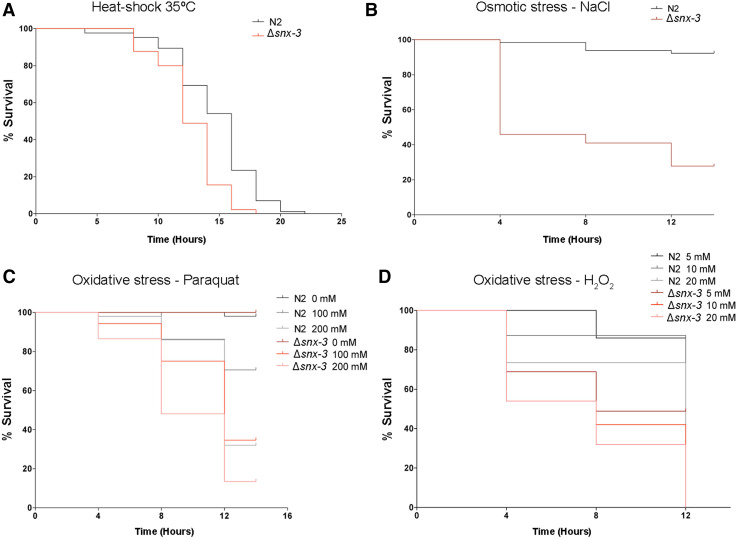Fig. 5.
Snx-3 mutant susceptibility to stress. a Survival curve of wild-type (N2) and Δsnx-3 young adults grown at 20 °C, upon a heat-shock at 35 °C. Δsnx-3 mutant median survival is 12.7 h comparing to the wild-type survival of 14.7 h. b Survival curve of wild-type (N2) and Δsnx-3 young adults exposed to an osmotic stress (NaCl 400 mM) for 12.0 h at 20 °C (p < 0.001). Δsnx-3 mutant median survival is 8 h comparing to the wild-type survival of 13.6 h. c, d Survival curves of wild-type (N2) and Δsnx-3 young adults exposed to distinct oxidative stress. c Synchronized young adults were exposed to different concentrations of Paraquat (100 and 200 mM) for 12 h. Δsnx-3 mutant median survival is 11.5; 9.6 h (100 and 200 mM paraquat, respectively) comparing to the wild-type survival of 12.9; 12 h (100 and 200 mM paraquat, respectively). d Synchronized young adults were exposed to different concentrations of H2O2 (5, 10 and 20 mM) for 12 h (p < 0.001). Median survivals of Δsnx-3 mutant: 8.7; 7.8; 7.4 h (5, 10 and 20 mM, respectively). Median survivals of N2: 11.4; 10.9; 9.8 h (5, 10 and 20 mM, respectively). For each survival assay, one representative experiment is presented from three independent replicates with similar results

